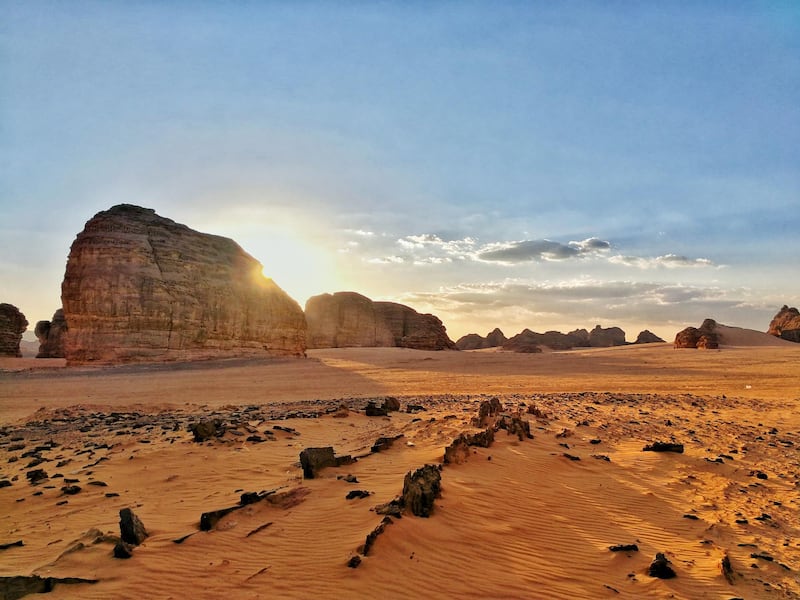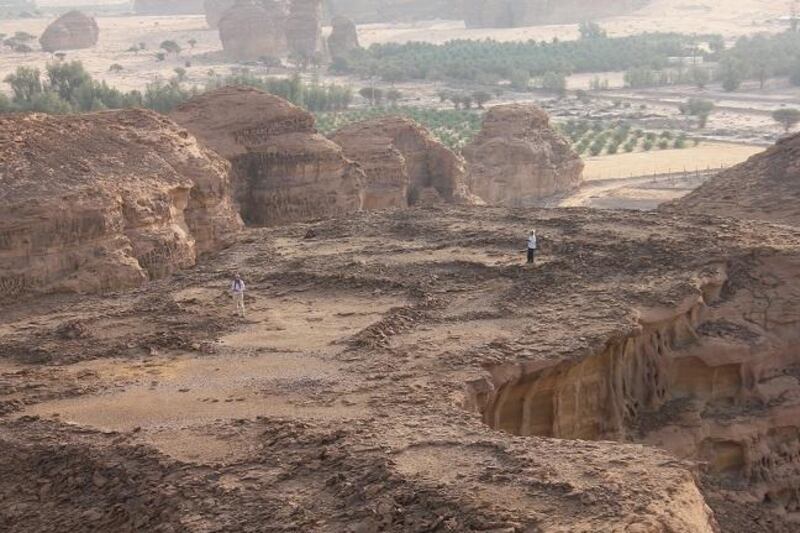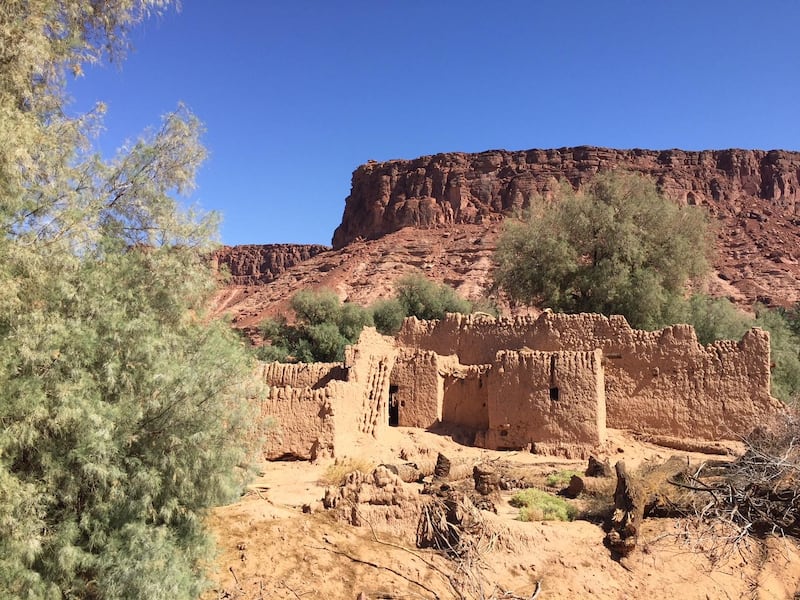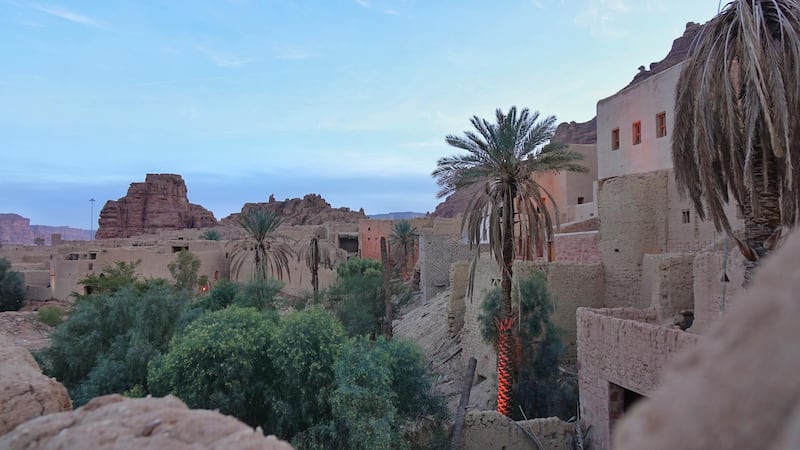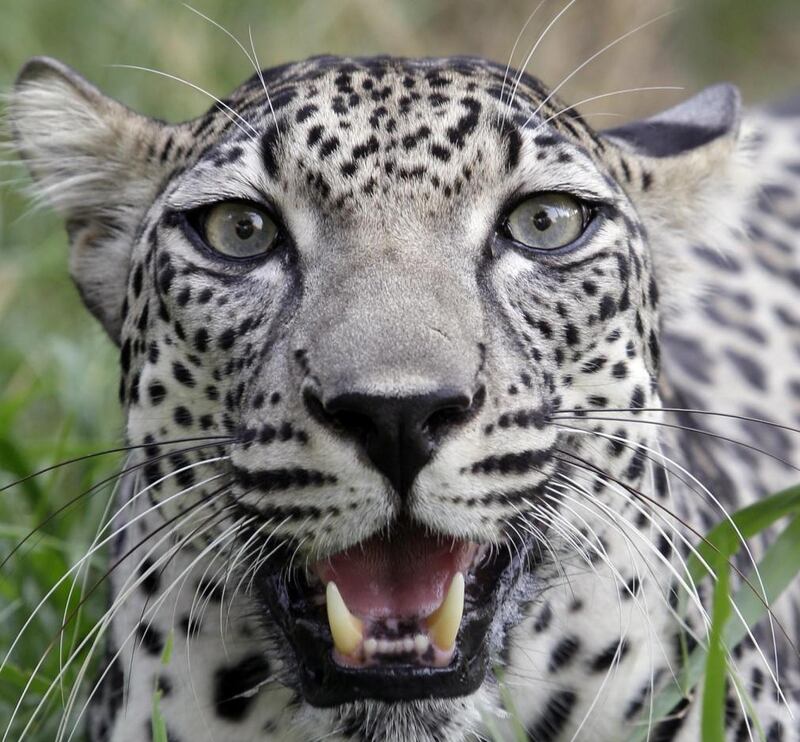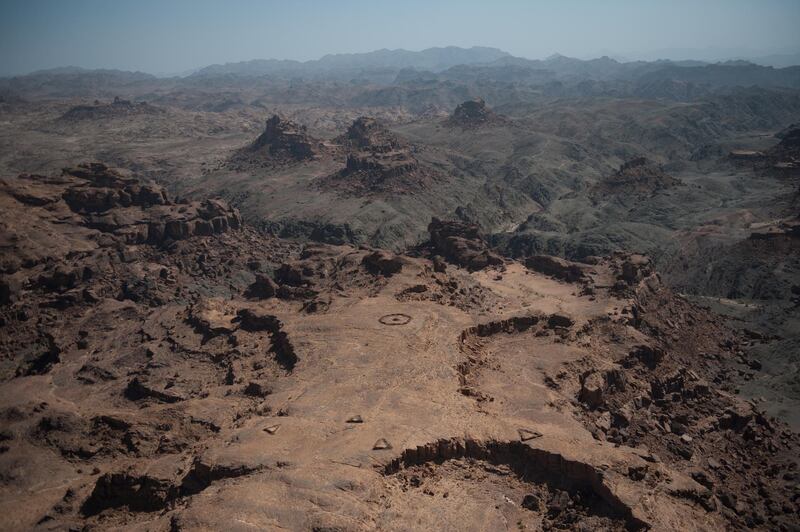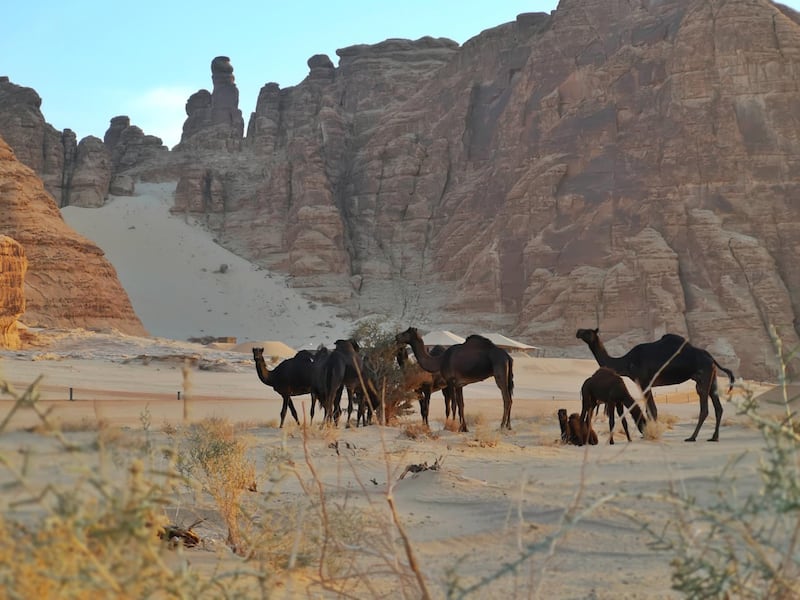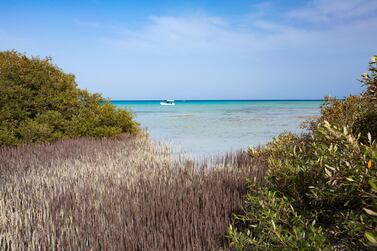"Look deep into nature, and then you will understand everything better," Albert Einstein once said. It seems the people involved in Saudi Arabia's Al Ula tourism project have taken those words to heart.
When Crown Prince Mohammed bin Salman laid the foundation stone for the development of a new ecotourism project in the kingdom in February, he helped launch a development that could transform a historic region in the country's north-west through the revival of its natural ecosystems.
Developers want to attract as many as two million visitors to Al Ula. One of the cornerstones of the project is Al Sharaan Nature Reserve, where the region's original ecosystem will be restored. It's something that Amr Al Madani, chief executive of the Royal Commission for Al Ula, is passionate about.
"Al Ula is a place of spectacular natural beauty, with varied habitats that once thrived with life, coexisting with our early ancestors, as seen through rock inscriptions in the valleys," Al Madani says. "We are committed to reliving these traditions of peaceful coexistence and preserving the natural beauty of Al Ula's landscapes, as well as re-establishing the rich diversity of plant life and wildlife that once flourished here."
Putting a plan in motion
To be successful, conservation is key, Al Madani says. "It will play a prominent role in everything we do – beginning with the development of Al Sharaan Nature Reserve and continuing with the creation of the world's largest fund for the conservation of the endangered Arabian leopard," he says.
But that's no small undertaking. The first step in the project involved identifying threatened species by recording animals and plants that had declining or fragmented population numbers or degraded habitats. Animals that had reduced prey populations and those at risk from human conflict were also highlighted.
Armed with that information, those involved in the project had to begin restoring habits for native species. This involved a variety of techniques, including replanting indigenous, biodiverse acacia woodland and installing boundary fences to restrict livestock access. When the region's vegetation recovers, indigenous animals can then be reintroduced.
Earlier this year, the project passed its first real test when a team of experts from the College of African Wildlife Management in Mweka, Tanzania, partnered with the Al Ula team to introduce Nubian ibex, red-necked ostriches and idmi gazelles back to the area. It was a slow process, but critical to repopulate what was once a thriving biosphere. "We began with a 'soft release' approach that allowed animals to be kept in an enclosed pen at the site to adapt to their new environment," says Al Madani. "Following this, the animals were given food provisions that allowed them to become familiar with the natural food and local climate in which they would be living."
Rangers have stationed in the area to protect them from poachers and ensure that all of the wildlife is cared for. The rangers also received in-depth training from the college in Mweka. "Mweka have trained over 6,000 rangers from 51 countries worldwide" says Al Madani.
Protecting the Arabian leopard
A major part of the Al Ula project centres on the Arabian leopard, which once thrived on mountains across the Arabian Peninsula. Since 1996, it has been placed on the International Union for Conservation of Nature's Red List as a critically endangered species. "It is our duty to protect, conserve and build the population numbers to preserve the Arabian leopard from becoming a footnote of history," says Al Madani.
The introduction of The Global Fund for the Arabian Leopard is meant to establish funds to be used specifically to help protect the world's remaining wild leopard populations through initiatives such as captive breeding programmes, community-based conservation projects and scientific research.
It's not the first time a breeding programme has been introduced in the Arab world. More than four decades ago, the Arabian oryx became the focus of a conservation project by the UAE and Saudi Arabia, which increased the wild oryx population to 1,220. Those behind the Al Sharaan project would like to replicate that success with the Arabian leopard.
"A comprehensive captive breeding programme is being implemented and a state-of-the-art facility will be constructed in Madakhil," says Al Madani. "Here, the effort to breed the Arabian leopard will take place with the aim of reintroducing it into the improved habitat of Al Sharaan Nature Reserve. This will be a gradual process."
A gift to the rest of the world
It's not only flora and fauna getting special attention, either. The ancient lands and artefacts discovered in the region are also being carefully preserved. "These sites are precious and rooted in years of history – they contribute to our global knowledge of the Dadan, Nabataean and Islamic civilisations," Al Madani says. "We are gradually understanding more about the lives of those who lived and died across this vast landscape dating back to prehistoric times."
While both Al Sharaan Resort and the entire destination of Al Ula has been described as a forward-thinking tourism attraction, careful consideration has also been given to each site's vulnerabilities. The plan is to draw tourists from around the globe to savour tales of the past in a manner that complements the natural land.
For Al Madani, the project is a gift from Saudi Arabia to the rest of the world. "Our vision is to bring back to life the wonder and enchantment of the desert and its wild nature," he says. "I am excited for the opportunity to restore and protect this exceptional landscape. The life that will once again thrive here represents Al Ula's intention to conserve and beautifully interpret our historic and natural treasures – a gift to the world."
